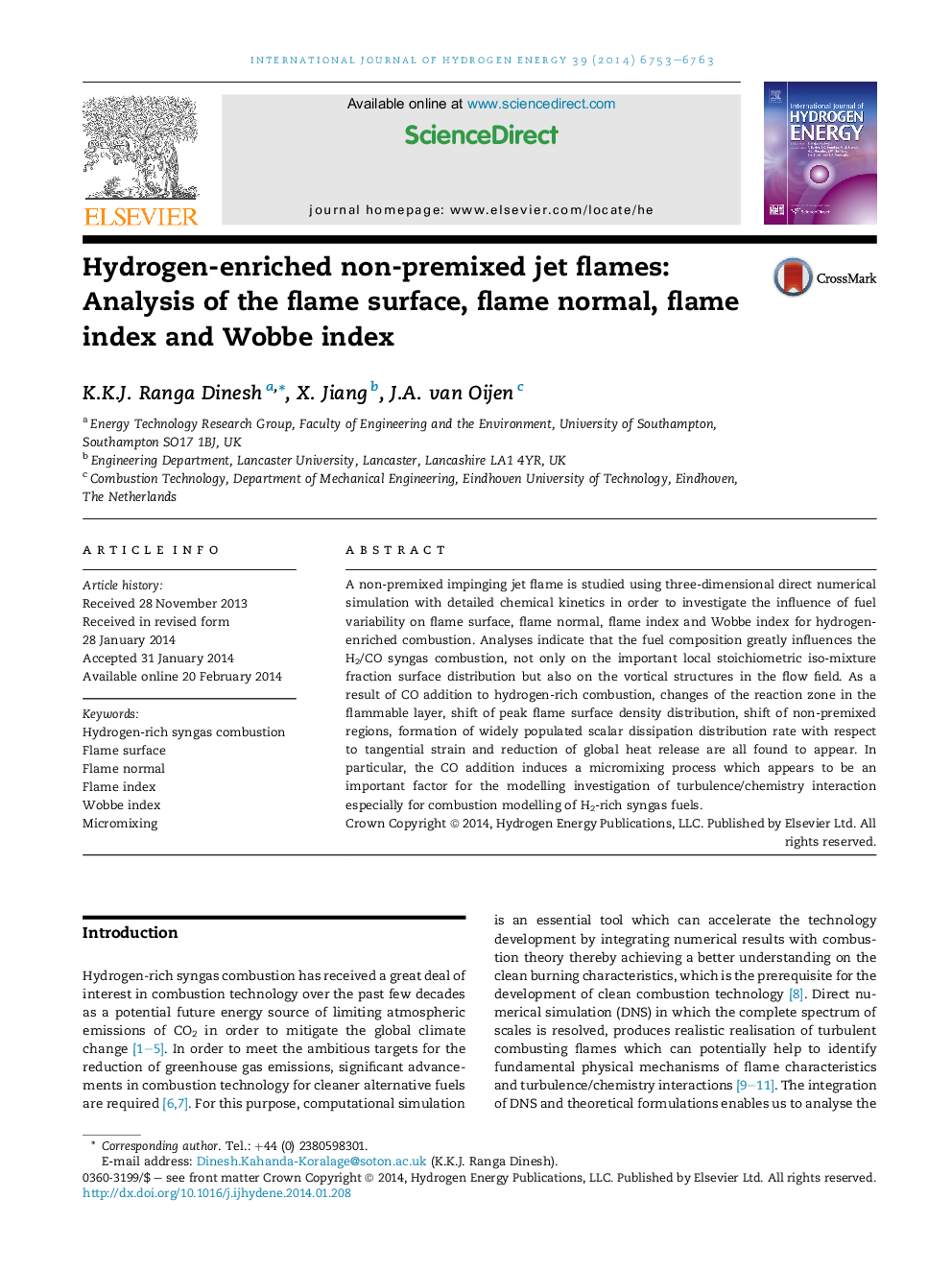| Article ID | Journal | Published Year | Pages | File Type |
|---|---|---|---|---|
| 1272868 | International Journal of Hydrogen Energy | 2014 | 11 Pages |
•Mathematical analysis of hydrogen and syngas flames were investigated.•Results show structural changes of the reaction zone in the flammable layers with respect to fuel variability.•Results show widely populated scalar dissipation distribution rate with respect to tangential strain rate.•Results indicate that fuel variability not only affects the flame structure, but also influences the micromixing behaviour.
A non-premixed impinging jet flame is studied using three-dimensional direct numerical simulation with detailed chemical kinetics in order to investigate the influence of fuel variability on flame surface, flame normal, flame index and Wobbe index for hydrogen-enriched combustion. Analyses indicate that the fuel composition greatly influences the H2/CO syngas combustion, not only on the important local stoichiometric iso-mixture fraction surface distribution but also on the vortical structures in the flow field. As a result of CO addition to hydrogen-rich combustion, changes of the reaction zone in the flammable layer, shift of peak flame surface density distribution, shift of non-premixed regions, formation of widely populated scalar dissipation distribution rate with respect to tangential strain and reduction of global heat release are all found to appear. In particular, the CO addition induces a micromixing process which appears to be an important factor for the modelling investigation of turbulence/chemistry interaction especially for combustion modelling of H2-rich syngas fuels.
